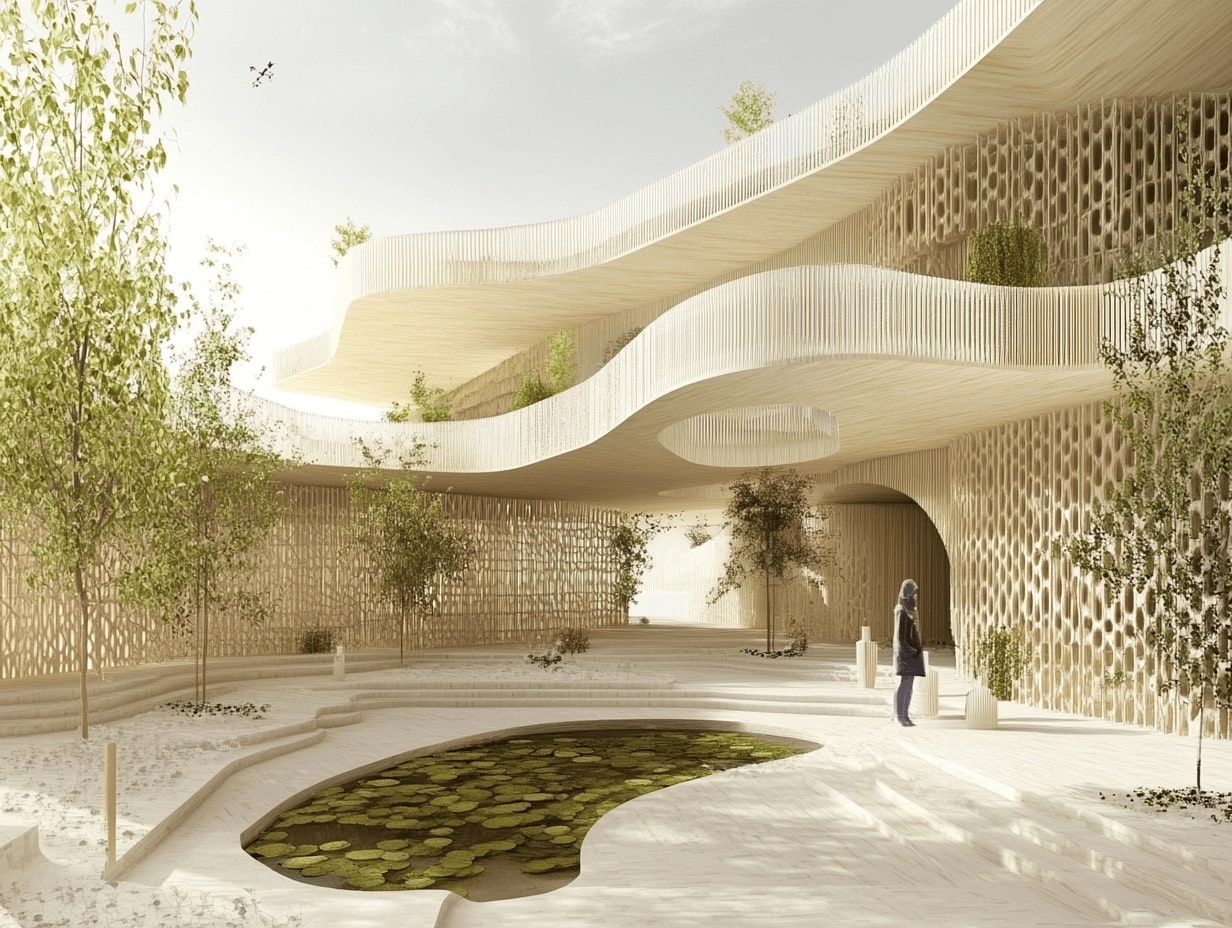- Home
- Articles
- Architectural Portfolio
- Architectral Presentation
- Inspirational Stories
- Architecture News
- Visualization
- BIM Industry
- Facade Design
- Parametric Design
- Career
- Landscape Architecture
- Construction
- Artificial Intelligence
- Sketching
- Design Softwares
- Diagrams
- Writing
- Architectural Tips
- Sustainability
- Courses
- Concept
- Technology
- History & Heritage
- Future of Architecture
- Guides & How-To
- Projects
- Interior Design
- Competitions
- Jobs
- Store
- Tools
- More
- Home
- Articles
- Architectural Portfolio
- Architectral Presentation
- Inspirational Stories
- Architecture News
- Visualization
- BIM Industry
- Facade Design
- Parametric Design
- Career
- Landscape Architecture
- Construction
- Artificial Intelligence
- Sketching
- Design Softwares
- Diagrams
- Writing
- Architectural Tips
- Sustainability
- Courses
- Concept
- Technology
- History & Heritage
- Future of Architecture
- Guides & How-To
- Projects
- Interior Design
- Competitions
- Jobs
- Store
- Tools
- More
Top Architectural Destinations Every Traveler Must Experience: Iconic Landmarks & Hidden Gems
Discover the world’s top architectural wonders that tell stories of history, culture, and innovation. From ancient landmarks like Machu Picchu to modern marvels like the Burj Khalifa, explore how these iconic destinations captivate travelers.

Architecture tells the story of a place—its history, culture, and vision for the future. As travelers, we’re drawn to destinations where design shapes the landscape and leaves us in awe. From towering skyscrapers to ancient wonders, the world is filled with architectural masterpieces that spark curiosity and inspire exploration.
Whether it’s the intricate details of centuries-old cathedrals or the sleek lines of modern marvels, these structures are more than just buildings—they’re experiences. They invite us to see the world through the lens of creativity and innovation, connecting us to the people and stories behind them. Let’s dive into the must-visit architectural destinations that every traveler should have on their bucket list.
Table of Contents
ToggleThe Importance Of Architectural Travel
Architectural travel reveals the cultural identity and historical evolution of destinations. Structures like the Great Wall of China or the Burj Khalifa embody the ingenuity and values of their creators, bridging the past and future. By exploring these landmarks, we engage directly with the stories, techniques, and artistic visions that define a community.
Travel motivates us to step beyond visual appreciation and into experiential learning. Walking through the halls of the Colosseum, standing beneath the domes of the Hagia Sophia, or marveling at the geometry of the Louvre Pyramid allows us to fully immerse ourselves in the spirit of human achievement. Such experiences spark curiosity and open doors to deeper understanding.
These itineraries provide more than memorable sights. Iconic designs like Antoni Gaudí’s Sagrada Família or Frank Lloyd Wright’s Fallingwater encourage us to reimagine space, sustainability, and the role of architecture in daily life. Architectural travel transforms the way we view the built world, offering a richer appreciation for innovation and legacy.

Iconic Structures Every Traveler Should See
These architectural marvels define cities and represent cultures, making them essential stops for anyone exploring the world’s built wonders.
The Eiffel Tower, France
Standing at 1,083 feet, the Eiffel Tower dominates Paris’s skyline. Designed by Gustave Eiffel and completed in 1889, this iron structure attracts millions of visitors annually. Its design exemplifies 19th-century engineering achievements, and its observation decks offer panoramic views of the city. Illuminated at night, it’s a universal symbol of romance and innovation.
The Taj Mahal, India
Built between 1632 and 1653, the Taj Mahal remains a pinnacle of Mughal architecture. Commissioned by Emperor Shah Jahan as a mausoleum for his wife Mumtaz Mahal, its white marble façade features intricate inlays of semi-precious stones. Located in Agra, this UNESCO World Heritage site symbolizes eternal love and is visited by over 7 million people each year.
The Burj Khalifa, UAE
The Burj Khalifa in Dubai stands at 2,717 feet, making it the tallest building in the world. Its sleek design, inspired by the Hymenocallis flower, combines modern engineering with cultural motifs. Visitors can experience panoramic views from its observation decks and marvel at its advanced sustainability features, like condensate collection systems that harvest millions of gallons of water annually.
The Sydney Opera House, Australia
The Sydney Opera House is an iconic example of 20th-century design. Situated on Bennelong Point, its sail-like shells were designed by Jørn Utzon and completed in 1973. Known for its innovative construction techniques, the Opera House hosts over 1,500 performances annually, drawing millions of visitors eager to explore its architecture, acoustics, and cultural significance.
The Guggenheim Museum, USA
Located in New York City, the Guggenheim Museum is a masterpiece designed by Frank Lloyd Wright. Its spiral ramp gallery, completed in 1959, revolutionized museum architecture. This innovative structure not only houses world-class modern art collections but also provides a cohesive visitor experience where the building itself becomes part of the exhibit’s narrative.

Historical Landmarks Rich In Culture
Historical famous landmarks transport us to the past, offering an intimate glimpse into the cultures and civilizations that shaped the world. These architectural treasures encapsulate human creativity, engineering, and spiritual devotion.
Machu Picchu, Peru
Perched high in the Andes Mountains, Machu Picchu stands as a testament to the ingenuity of the Inca civilization. This 15th-century UNESCO World Heritage site features advanced stone construction techniques, blending perfectly with the natural surroundings. Its terraces, temples, and Intihuatana stone reflect the Inca’s deep understanding of astronomy and agriculture. Visitors often follow the Inca Trail to fully immerse themselves in its cultural and historical significance.
The Colosseum, Italy
The Colosseum, an enduring icon of Ancient Rome, showcases the architectural brilliance of the Roman Empire. Completed in 80 CE, it could accommodate up to 50,000 spectators for gladiatorial contests and public spectacles. Its amphitheater design, characterized by arches and concrete engineering, continues to influence modern stadium construction. Exploring its underground chambers reveals the complex mechanisms that brought ancient performances to life.
Angkor Wat, Cambodia
Angkor Wat, the world’s largest religious monument, embodies the cultural and spiritual essence of the Khmer Empire. Constructed in the 12th century, this UNESCO site features intricate bas-reliefs depicting Hindu epics and celestial beings. Its central towers symbolize the mythical Mount Meru, blending art and symbolism in an awe-inspiring way. Sunrise visits are a popular choice, offering stunning views that enhance the site’s mystical appeal.

Hidden Gems And Emerging Destinations
Exploring unique architectural sites often leads us to lesser-known masterpieces that blend innovation with cultural significance. These hidden gems and emerging destinations offer travelers fresh perspectives on design and creativity.
The Lotus Temple, India
The Lotus Temple in New Delhi captivates visitors with its petal-like structure, representing unity and peace. Completed in 1986, this Bahá’í House of Worship features 27 free-standing marble “petals” arranged in clusters to form a lotus. Surrounded by nine pools, the temple emphasizes harmony and simplicity, welcoming people of all religions. Its serene ambiance complements its architectural ingenuity, making it a must-visit.
The Dancing House, Czech Republic
The Dancing House in Prague showcases deconstructivist architecture with its dynamic, curving design. Created by architects Vlado Milunić and Frank Gehry, this 1996 masterpiece resembles a pair of dancers, earning it the nickname “Fred and Ginger.” Its contemporary aesthetic contrasts with Prague’s historic architecture, creating an intriguing visual statement. The top-floor restaurant offers panoramic views, enhancing the visitor experience.
Bosco Verticale, Italy
Bosco Verticale, or the Vertical Forest, transforms Milan’s skyline with its sustainable design. Designed by Stefano Boeri and completed in 2014, the twin residential towers integrate over 20,000 trees and plants across their facades. This visionary project helps combat air pollution and urban heat, demonstrating harmony between architecture and ecology. Its lush greenery provides a distinct blend of functionality and beauty.

Tips For Planning Your Architectural Adventure
Research Destinations Thoroughly
Evaluate the architectural significance and cultural relevance of destinations. Check resources like UNESCO World Heritage lists, architecture-focused travel guides, and trusted blogs to identify must-visit structures such as iconic landmarks (e.g., the Eiffel Tower) and modern feats (e.g., the Guggenheim Museum).
Prioritize Experiences
Create an itinerary based on your interests, balancing famous sites and hidden gems. Include immersive activities, such as guided tours at Machu Picchu or interactive exhibits at the Sydney Opera House, to gain deeper insights into the design and history of these sites.
Consider Best Times To Visit
Plan your visits during optimal seasons or architectural events like biennales, exhibitions, or guided heritage days. For example, explore Angkor Wat at sunrise to avoid crowds and capture stunning photos, or visit the Sagrada Familia during quieter weekday hours to appreciate its intricate details.
Learn Local Histories
Familiarize yourself with the stories behind each structure. Read about the visionaries behind creations like the Burj Khalifa or the cultural importance of monuments like the Taj Mahal to enhance your appreciation of their design and function.
Pack Smart Essentials
Bring items like comfortable walking shoes for exploring sites such as the Great Wall of China, a camera for capturing unique structures, and a lightweight guidebook or app with architectural insights. Adapt your clothing to weather conditions, especially when visiting destinations with varying climates.
Conclusion
Architectural travel enriches our understanding of culture, history, and innovation. It connects us to iconic landmarks like the Taj Mahal and Machu Picchu while introducing hidden gems such as the Lotus Temple and Bosco Verticale, offering diverse experiences. By exploring these destinations, we engage with the creativity and ingenuity of their creators, gaining insights into their stories and values.
- Architectural destinations
- Architectural travel guide
- architecture tourism
- architecture travel bucket list
- famous architecture sites
- famous buildings to visit
- hidden architectural gems
- historic architecture sites
- iconic landmarks
- modern architectural wonders
- must-see architecture
- off-the-beaten-path architecture
- top architectural destinations
- travel for architecture lovers
- travel landmarks
- unique architecture destinations
Submit your architectural projects
Follow these steps for submission your project. Submission FormLatest Posts
Istanbul: A Living Museum of Architecture
Istanbul is a city where East meets West, offering a rich architectural...
Top Architectural Wonders You Must See on Your Next Vacation for an Unforgettable Journey
Discover breathtaking architectural wonders across history and innovation on your next vacation....
Discover 10 Mosques in the Arabian Peninsula: Architectural Wonders and Spiritual Heritage
Discover the allure of the Arabian Peninsula through ten remarkable mosques that...
The Best Places to Travel in 2025: Top Destinations for Unforgettable Adventures
Discover the top travel destinations for 2025, from iconic hotspots like Kyoto...












Leave a comment